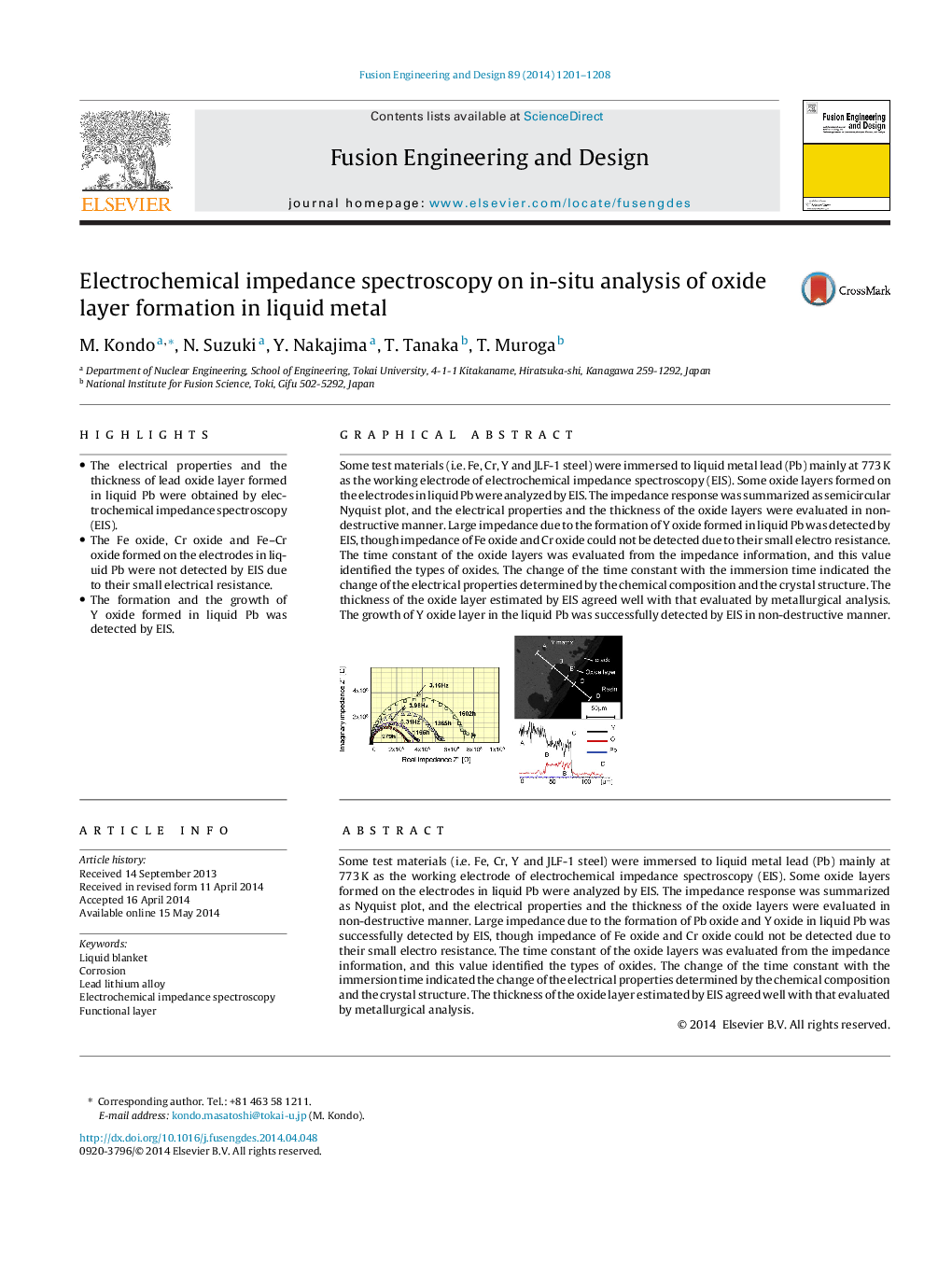| Article ID | Journal | Published Year | Pages | File Type |
|---|---|---|---|---|
| 271205 | Fusion Engineering and Design | 2014 | 8 Pages |
•The electrical properties and the thickness of lead oxide layer formed in liquid Pb were obtained by electrochemical impedance spectroscopy (EIS).•The Fe oxide, Cr oxide and Fe–Cr oxide formed on the electrodes in liquid Pb were not detected by EIS due to their small electrical resistance.•The formation and the growth of Y oxide formed in liquid Pb was detected by EIS.
Some test materials (i.e. Fe, Cr, Y and JLF-1 steel) were immersed to liquid metal lead (Pb) mainly at 773 K as the working electrode of electrochemical impedance spectroscopy (EIS). Some oxide layers formed on the electrodes in liquid Pb were analyzed by EIS. The impedance response was summarized as Nyquist plot, and the electrical properties and the thickness of the oxide layers were evaluated in non-destructive manner. Large impedance due to the formation of Pb oxide and Y oxide in liquid Pb was successfully detected by EIS, though impedance of Fe oxide and Cr oxide could not be detected due to their small electro resistance. The time constant of the oxide layers was evaluated from the impedance information, and this value identified the types of oxides. The change of the time constant with the immersion time indicated the change of the electrical properties determined by the chemical composition and the crystal structure. The thickness of the oxide layer estimated by EIS agreed well with that evaluated by metallurgical analysis.
Graphical abstractSome test materials (i.e. Fe, Cr, Y and JLF-1 steel) were immersed to liquid metal lead (Pb) mainly at 773 K as the working electrode of electrochemical impedance spectroscopy (EIS). Some oxide layers formed on the electrodes in liquid Pb were analyzed by EIS. The impedance response was summarized as semicircular Nyquist plot, and the electrical properties and the thickness of the oxide layers were evaluated in non-destructive manner. Large impedance due to the formation of Y oxide formed in liquid Pb was detected by EIS, though impedance of Fe oxide and Cr oxide could not be detected due to their small electro resistance. The time constant of the oxide layers was evaluated from the impedance information, and this value identified the types of oxides. The change of the time constant with the immersion time indicated the change of the electrical properties determined by the chemical composition and the crystal structure. The thickness of the oxide layer estimated by EIS agreed well with that evaluated by metallurgical analysis. The growth of Y oxide layer in the liquid Pb was successfully detected by EIS in non-destructive manner.Figure optionsDownload full-size imageDownload as PowerPoint slide
